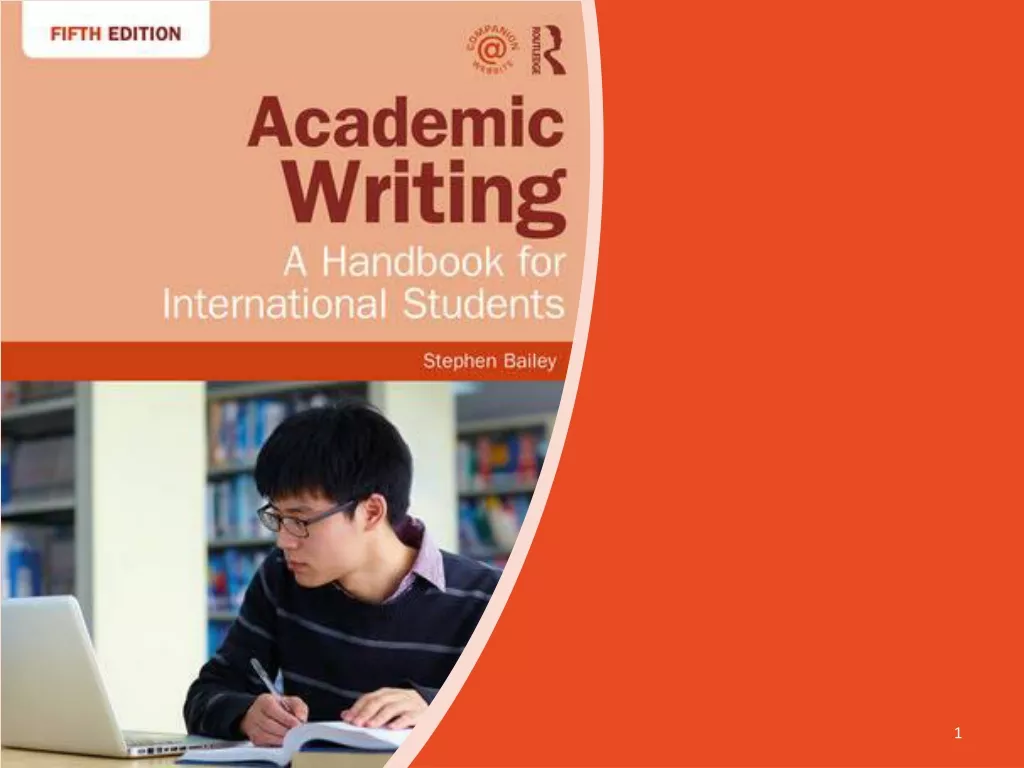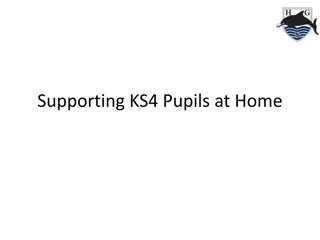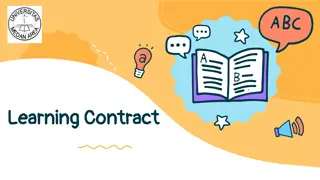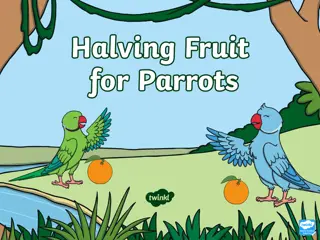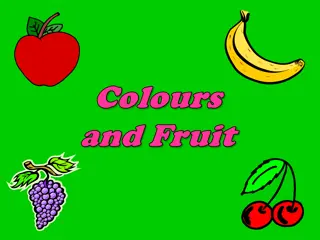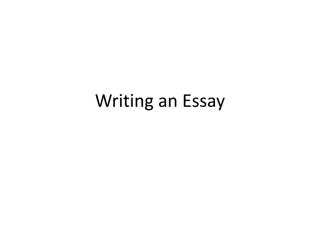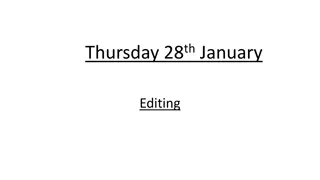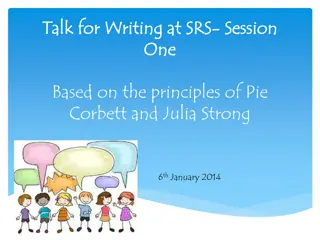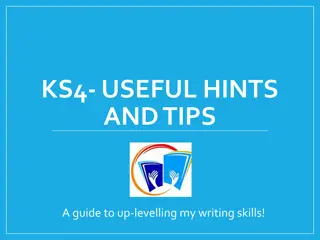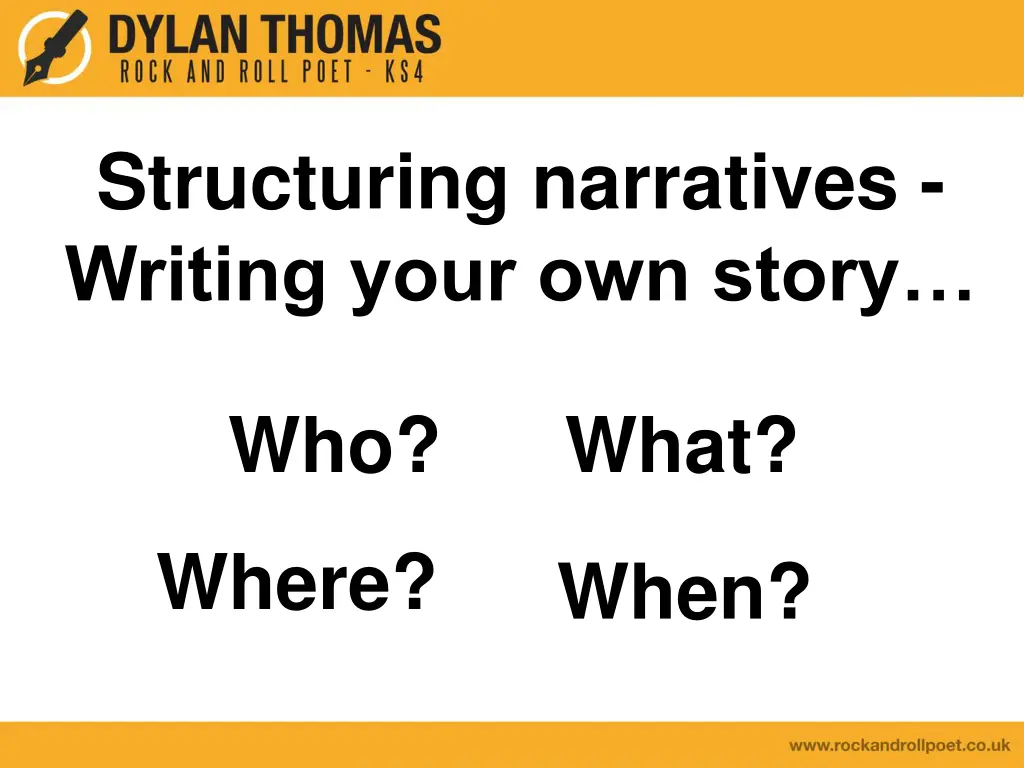
Crafting Your Own Narrative: A Guide to Storytelling Structure
Learn how to structure your story effectively with this comprehensive guide on developing characters, creating suspenseful settings, and weaving plots together seamlessly. Explore the elements of storytelling through detailed examples and practical tips for crafting compelling narratives.
Download Presentation

Please find below an Image/Link to download the presentation.
The content on the website is provided AS IS for your information and personal use only. It may not be sold, licensed, or shared on other websites without obtaining consent from the author. If you encounter any issues during the download, it is possible that the publisher has removed the file from their server.
You are allowed to download the files provided on this website for personal or commercial use, subject to the condition that they are used lawfully. All files are the property of their respective owners.
The content on the website is provided AS IS for your information and personal use only. It may not be sold, licensed, or shared on other websites without obtaining consent from the author.
E N D
Presentation Transcript
Structuring narratives - Writing your own story Who? What? Where? When?
Structuring narratives - Writing your own story Learning objectives: To learn how to structure a plan for a story. To link to the work of Dylan Thomas.
Sherlock holmes -1 Which genre? Crime/detective Romance Nosferatu Horro r Action/Adventure Science fiction
Paired Task Make a list of films that you think fit a specific genre. Be prepared to discuss these with the rest of your class.
Who? Main Character Other Characters Looks? Character? Personality? Mood? Who are they? How do they relate to the main character? What is interesting about them?
What? Beginning Middle End What sort of things should you introduce here? What should you develop here? How should you finish things off? Main character Setting Hint towards the problem The problem Change in setting Other characters Tension As bad as it can be Problem solved Return to the first setting Things are back to normal
Use descriptive language If you are saying something is big , why not describe it as enormous or gigantic ? A beautiful thing could be described as being incredibly beautiful or absolutely stunning . If you want to describe something as scary , you could say it was utterly terrifying , or extremely scary , or even, petrifying ! Make good word selections!
Where? When? Try to be specific and describe clearly the place and time that events take place. Create suspense! As he roamed the city alone in daylight it struck him how busy this place once was. He had been to this place at the same time a year ago and couldn t move through the crowds. The crowds had gone. If you are out there... if anyone is out there... I can provide food, I can provide shelter, I can provide security. If there's anybody out there... anybody... please.
Plan, plan, plan Genre Characters Who, what, where, when? Beginning, middle and end Descriptions
Peaches by Dylan Thomas Read the opening to Peaches by Dylan Thomas Can you guess what genre it is? Look at the way Uncle Jim is described. Is it effective characterisation? Look at the way that Thomas uses descriptive writing in the opening. How effective do you think it is?
Themes Write a story on one of the following themes: - Courage - Family - Life - Love - Travel - Relationships
My Story Checklist Punctuation Full stops, commas, question marks and exclamation marks. Do all my sentences start with a capital letter? Capital letters Sentences Do they all make sense? Have you used adjectives to make Adjectives your story more interesting? Does it make sense? Read your story



